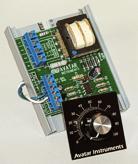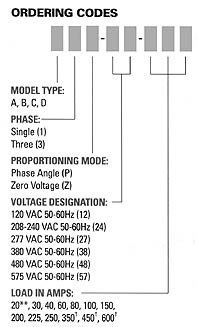SCR Power Controls
SCR Power Controls
At Quartz Tubing, we proudly offer SCR power controls to help regulate the heat your quartz heaters are producing.
Reliable - Oversized, isolated SCR's with MOV, DV/DT protection and I2T Rectifier fuses standard. No phase restrictions. No transformers to wire up. No field calibration needed.
Versatile - Phase Angle Control for IR Quartz heaters. Voltage and current limit gives smooth Proportional control. Zero voltage switched, with fast, wide-ratio, auto-variable time based proportioning and no 3rd line hookup required. On/Off controls replace mechanical and mercury contactors. Our SCR power controls can cycle 1,000,000,000 times or more. No HazMat problems, no arcs or mechanical wear.
Compact - Space saving integrated thermal-mechanical designs.
Custom and Multi-zone configurations available.
Affordable - Large family of controls lets you choose what is right for your needs.
Delivery - Stocked for overnight delivery.
The A1P and A3P Phase angle proportional controls. No temperature or power cycling. Fast response - 1/2 of power line cycle. Increase heater life up to 7x. Unique mono-couple design assures phase tracking for life (A1P). No phase restrictions and independent zero and span adjustments for each phase (A3P). Optional voltage and current limit.
The A3Z and A1Z zero voltage switches. Independent automatic synchronization, no phase rotation restrictions, fast, wide-ratio auto-variable time based proportioning, and superior firing resolution. No third line hook up for A3Z.
Product Specifications and Codes
Find your ordering code by choosing the appropriate product specifications from our list of available models.
Milliamp Output Modules
Manual Potentiometers, Solid State Relay Drivers and Input Interface modules (Dials) for use with your SCR Power Controller. Click here for available models and specifications.
MAI mA Input Interface Module
Accepts a 0-20 mA input signal at 1.5 volts and produces a 0-20 mA at 20 volt signal to drive multiple loads/controllers. MAI can also accept a potentiometer input (135 Ohm thermostat or any 1K pot) and produce 4-20 mA @ 20 V to drive all SCR power controls, valve positioners, etc. The MAI can be modified to accept DC voltage inputs and convert them to a 4-20 mA control signal to drive SCR and TRIAC controls. (D.C. voltage input ranges must be ordered as options, contact us for availability). Operates on 120 VAC, 208-277 VAC, or 480 VAC.
MAP Series Manual Potentiometer 0-20 mA Output Source
Same as MAI but has potentiometer with 2 ft. of wire, 0-100 dial and knob ready for panel mounting. Works to control all "A" series controllers for open loop control. Operates on 120 VAC, 208-277 VAC, or 480 VAC. Will also work with 4-20 mA signal as an amplifier/trim adjustment.
MTP Series Manual Potentiometer Solid State Relay Driver
MTP produces a fast time proportioning 20 VDC signal for driving Solid State Relays (SSRs). MTP has a power output limit adjustment of 63 - 100%. The MTP accepts the same inputs as the MAI (potentiometer, mA, D.C. Voltage, or 135 Ohm thermostat). The MTP is supplied with potentiometer with 2 ft. of wire, 0-100 dial and knob. Can run over 10 SSRs.
For 4-20 mA Input SSR Driver use MITP. MITP mounts onto SSR.
Dimensions:
All MAI, MAP, & MTP models
H x W x D in inches
3 x 4 x 1.75
Mounting: (2) 3.5 in. #6 or #8 screw
All MAI, MAP, & MTP are mounted to a standard snap-track.
All MAP, & MTP come with 500 ohm potentiometer. Set point pot needs 3/8 inch hole for panel mounting. MAI, MAP, & MTP can use 100 to 1000 ohm potentiometer.
0 - 100 scale 2.00 by 2.00 inches square. Knob is 1.1 inches in diameter.
All MAI, MAP, & MTP modules are isolated to 2500 V.
0 - 20 mA output is voltage regulated for maximum stability.
Get Your Quote!
Quartz Radiant Heating Elements For Any Application
All Rights Reserved | Quartz Tubing, Inc.








